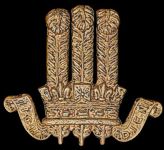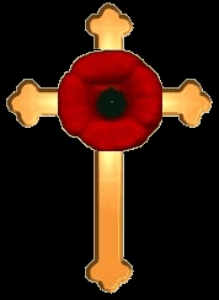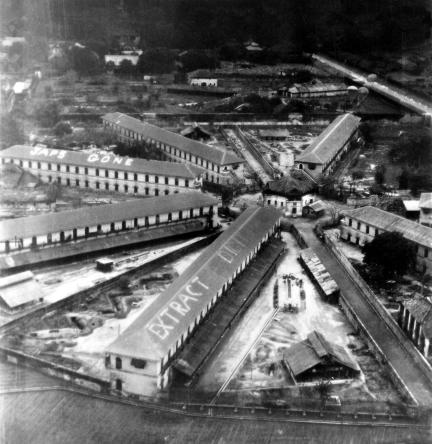|

180289
Lieutenant
Denis George Frederick Gudgeon

2nd King Edward VII's Own Gurkha Rifles
Sirmoor Rifles
3.2nd Gurkhas
Service History
By Denis Gudgeon
May 1940:
Enlisted in Local Defence Volunteers and guarded an ammunitions factory at Cobham, Surrey. The LDV later became known as the Home Guard.
June 8 1940:
Medical examination.
August 12 1940:
Admitted to Royal Herbert Hospital, Woolwich with septic feet.
August 21 1940:
Enlisted in Young Soldier's Battalion (18-19 1/2) at sports ground of Selfridges near Preston Road underground station, Harrow. I was billeted at sports ground of Abbey Road Building Society (now known as Abbey National Building Society). My rank was rifleman and my regiment was Kings Royal Rifle Corps. I was part of a unit, which guarded an RAF supply dump at Wembley.
January 1941:
I was selected for officer training at 163 OCTU at Billy Butlin’s Holiday Camp, Pwllheli, Gwynedd.
March 28 1941:
Commissioned as 2nd Lieutenant.
April 1941:
Reported to depot at Chisledon Camp between Swindon and Marlborough.
May-December 1941:
Served as Platoon Commander in Motor Battalion of an armoured division in various parts of country including Arundel Castle, Chiddingfold, East Anglia and Ampleforth College.
December 1941:
Applied to join Indian Army who were short of 50,000 officers.
January 1942:
Embarked in an officer draft at Gourock in P and O troopship Strathnaver. I sailed in a large convoy escorted by the battleship Resolution. One troopship was damaged by a torpedo from a U boat. The convoy called at Freetown and Durban where I transferred to another troopship The Brittanic. I was greeted at Durban dockside by ”The Lady in White” Perla Siedle Gibson, an international concert soprano who sang arias to us through a megaphone.
March 1942:
Arrived in Bombay and travelled by train to MHOW for 2 months training at an OTS school.
May 1942:
I joined 3rd battalion 2nd King Edward VII Gurkha Rifles as 2nd in command of C Company at Loralai on North West frontier.
May 26 1942:
My 21st birthday. Celebration lasted for 1 week!
May/June 1942:
My battalion trained for future operations in Western Desert Egypt/Libya. I learned how to operate a sun compass and passed my elementary Urdhu examination for which I received 150 rupees.
June 1942:
The battalion was ordered to report to 77th Indian Infantry Brigade near Savgor in the jungle near by. My commander was Brigadier O.C. Wingate, who had been educated at Charterhouse School.
July-December 1942:
I carried out exhausting training for the 1st Chindit expedition marching up to 40 miles a day carrying 70 pounds of equipment! We were employed in long-range penetration and independent operation behind the enemy lines in Burma. Our transport consisted entirely of pack mules. Extremely stubborn creatures.
July 1942:
Heavy rain fell in the Savgor area for 3 days. Our camp was isolated by floods. Storm waters continued to rise and forced us to shift all movable stores including my wind up gramophone and 78 RPM records off the ground into the trees. For 3 days we roosted among the branches.
Xmas-New Year 1942/3:
Christmas and New Year provided a week of relaxation. The numerous Scottish officers transformed Hogmanay into a particular jolly occasion.
10 January 1943:
The battalion travelled by train to Shubri on the Brahmaputra River, thence by stern wheel paddle steamer to Pandu, thereafter reaching Dimapur by way of a metre gauge railway we then marched the 120 miles in stages by night to Imphal.
6th February 1943:
General Wavell reviewed us in his customary thorough fashion and bade us God-speed and high fortune. C Company now became 3 Column under the command of Major Mike Calvert.
15th February 1943:
Our column crossed the River Chindwin into Burma by 2 flat-bottomed boats and 4 dugout canoes. We swam the mules and horses across, not an easy task. All our supplies were dropped to us by parachute by Dakota DC2 and DC3 and by Lockheed Hudson.
6 March 1943:
Our commando unit blew up 3 box girder railway bridges at Nankan railway station and cut the single track railway line in 70 places.
28 March 1943:
The column crossed the mile wide River Irrawaddy in small dugout canoes. I set off with my company commanded by George Silcock heading back our outward route, but on attempting to recross Irrawaddy no boats could be found in spite of a despairing search so Gurkhas decided to make our own boats i.e. sapper sampans which were a bamboo framework with an outer skin of ground sheets. I was tail-end Charlie but our groundsheets were rotten and our craft started to sink. I had no option but to abort. I was on the wrong side of the river with 11 Gurkhas and a Karen from the Burma Rifles. After an anxious search we were found a craft and bribed the boatman to take us across the river. The only maps which I had were of the Chindwin area. I did however have a prismatic compass and set a course of 300 degrees. Even so navigation was not easy as we were marching against the grain of the country and the odd mountain range intervened. I brought my party to within a short distance of the Chindwin but long months of marching with scarce ration and severe physical exertions demanded its price and I suddenly collapsed with sheer exhaustion. My men were anxious but I ordered them to carry on and hoped to catch them up later, which in the end did not happen. I was now on my own with my own compass for a guide. I then hit a track and hid beside it. I accosted a native who spoke good English. He was a fishmonger selling dried fish and promised to get me a boat.
Japanese POW
Captured 20th April 1943 trying to re-cross Chindwin
Held in Rangoon Jail
25 April 1943:
This did not happen as he collected 12 of his mates who all pointed their rifles at me and handed me over to the local Jap garrison. I was interrogated for 4 hours and by a Jap officer who pointed a double edged Samurai sword at me. I was then taken by road to the railhead at Mandalay where I was put on a train bound for Rangoon.
On arrival at the capital I was taken to Rangoon central jail and was promptly thrown into solitary confinement in No 5 block which was the norm for all officers. We were not allowed to talk. Flight-Lieutenant MacDonald kept watch by the block entrance. He would whistle “The Campbells are coming” when the guards paid their many visits and “Intermezzo” when the coast was clear. I was released from solitary after 5 weeks. The complement of the camp was some 600. Among them were 210 Chindits, a staggering 168 of whom were to die from various causes such as malnutrition, disease, brutalities and air raids.
November 1943:
I was pouring out mugs of tea one lunch time when the camp was struck by a stick of a 250 kilo bombs from an American Bomber which had been hit and jettisoned its load. 14 POWs were killed in this raid. Jail conditions were abysmal. We had no glass windows and the monsoon rains just poured in. There was no electric lighting and we slept on the floor coping with bed bugs, lice, ants and female mosquitoes. Washing and drinking formalities were from a long trough but the water was frequently turned off due to the reservoir being bombed. We did not receive any Red Cross parcels. Rice was the staple diet. There was no milk or bread. The meat ration, generally of pork, was very irregular. The fresh vegetables consisted of aubergines, pumpkins, marrow and sweet potatoes. A contractor came round every 10 days and I was able to purchase Burmese cheroots, duck eggs and jaggery balls (a coarse brown sugar made from toddy palm sap). We were fortunate in having 2 senior RAMC officers but their medical facilities were extremely limited. Treatment for jungle sores was by copper sulphate. When I became seriously ill with dysentery I was given charcoal and creosote pills. I also suffered from hookworm, other ailments were Malaria and Beri Beri caused by the absence of vitamin B. An outbreak of smallpox sent the Japs into great panic and they promptly vaccinated all POWs, which prevented an epidemic. An outbreak of cholera, which lasted a fortnight, caused the deaths of 10 men.
April 25 1945:
We were suddenly issued with proper clothing in the form of a soft cap, long white pants and a pair of khaki shorts. We left Rangoon jail for the last time that day and marched north towards Pegu from where we marched East along the railway line towards Moulmein.
April 29 1945:
We reached a small village called Waw where our senior British officer Brigadier Hobson was called out to speak with the Jap commander. Half an hour later the Brigadier shouted out “We are free, we are free”. The Jap guards disappeared into the blue never to be seen again by us. Our troubles were by no means over as we were in no-mans-land between our advancing 14th Army and the retreating Jap forces, with a lot of firing going on. The members of RAF POWs under their squadron leader Duckinfield made a huge Union Jack from pieces of cloth supplied by friendly villagers and set a haystack on fire. Suddenly all hell was let loose. I cowered behind a mango tree whilst three Indian Air Force Hurricanes ground strafed us. Each plane made three passes at us and I was lucky to escape with bullet grazes to my right ankle and knee. Brigadier Hobson was not so lucky and he was our only fatal casualty, shot through the right kidney. Towards dusk an American POW Mustang Fighter pilot contacted the British forces and
April 30 1945:
I was officially liberated the next day by soldiers of the West Yorkshire regiment who took us in Bren carriers to an airstrip. An RAF Dakota flew me via Akyab to Comilla but the flight was not without incident as a Jap AA Battery fired at my aircraft. The clumps and puffs of black smoke looked very close but the pilot managed to take evasive action.
31 August 1945:
I finally arrived home at Merryfield airfield near Taunton after periods in various hospitals trying to rid me of my hookworms. I had some lengths of silk as presents but had to give duty to HM customs and excise!
Died
Age 89
31st October 2010
|